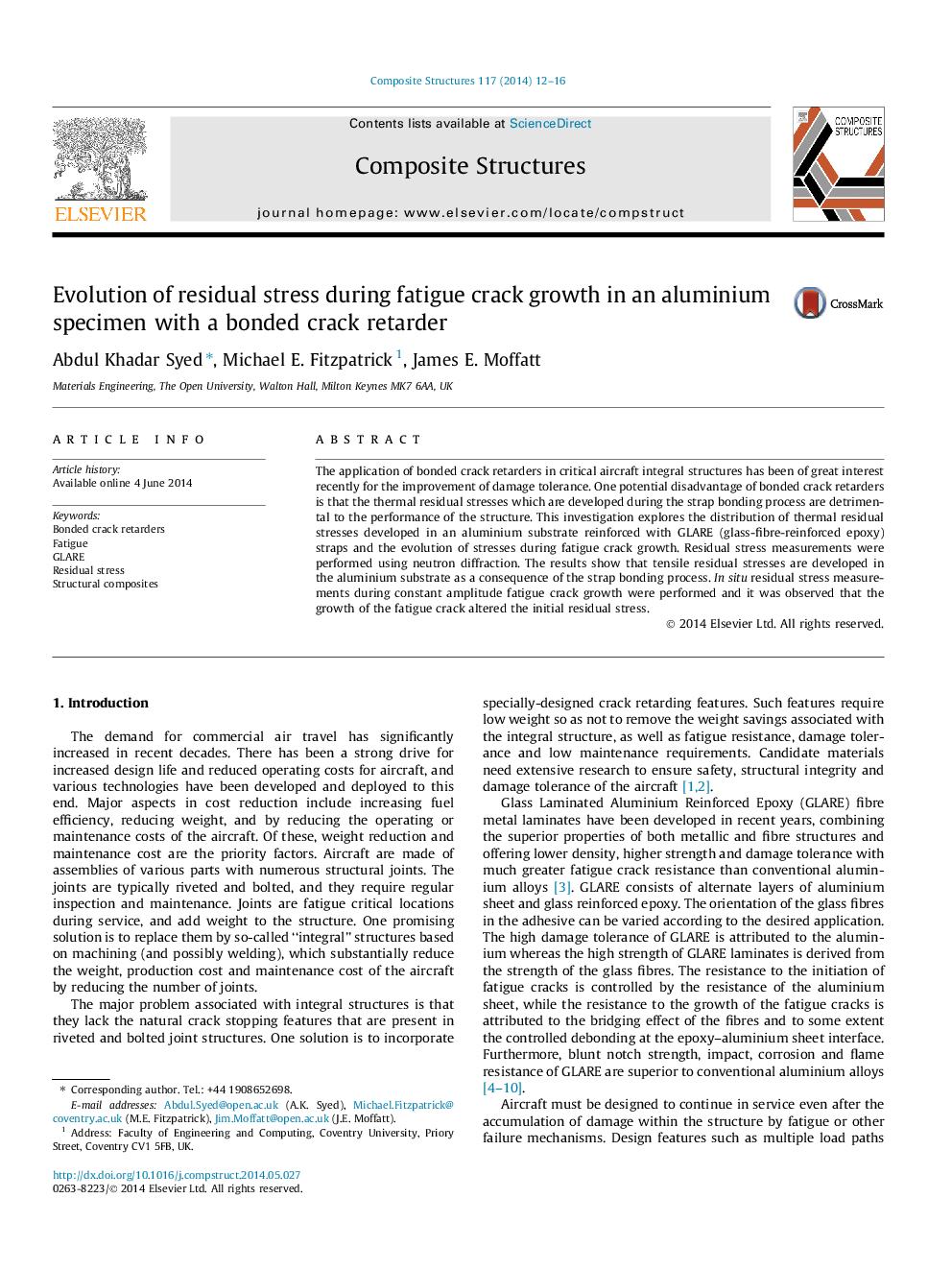| Article ID | Journal | Published Year | Pages | File Type |
|---|---|---|---|---|
| 251523 | Composite Structures | 2014 | 5 Pages |
The application of bonded crack retarders in critical aircraft integral structures has been of great interest recently for the improvement of damage tolerance. One potential disadvantage of bonded crack retarders is that the thermal residual stresses which are developed during the strap bonding process are detrimental to the performance of the structure. This investigation explores the distribution of thermal residual stresses developed in an aluminium substrate reinforced with GLARE (glass-fibre-reinforced epoxy) straps and the evolution of stresses during fatigue crack growth. Residual stress measurements were performed using neutron diffraction. The results show that tensile residual stresses are developed in the aluminium substrate as a consequence of the strap bonding process. In situ residual stress measurements during constant amplitude fatigue crack growth were performed and it was observed that the growth of the fatigue crack altered the initial residual stress.
